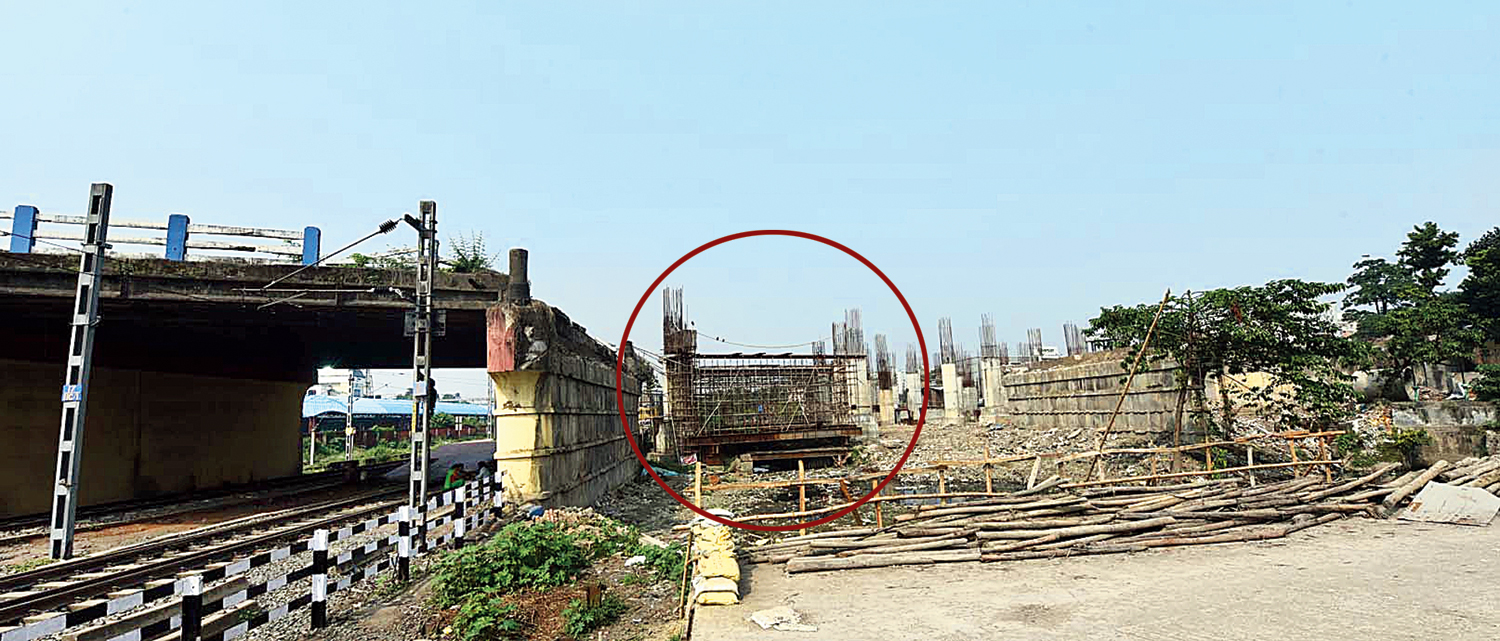The company that has won the bid to rebuild the Majerhat bridge will have to draw a fresh design to ensure that the structure does not come in the way of the construction of the Joka-Esplanade Metro.
Officials of the railways and the public works department decided at a meeting held last week that the original design, approved by the department before the tender for the project was floated on October 5, was not feasible, sources said.
The state government had initially planned to set up a bowstring bridge to replace the one that had collapsed on September 4.
“We have realised that it is not possible to set up a bowstring bridge in Majerhat. The design of bowstring bridge is such that it will intrude into the space where the Metro project is coming up. So, we have decided to change the design of the proposed bridge,” a state government official said on Friday.
The tracks of the proposed Joka-Esplanade Metro will pass a few metres from the bridge.
An engineer involved in the project said the width of the middle portion of a bowstring bridge — the two girders on which the deck slabs rest — would take up so much space that the structure would extend into the Metro space.
“So, the Haryana-based company that has won the bid to rebuild the bridge has been asked to design a cable-stayed bridge, which occupies less space compared with a bowstring bridge,” the engineer said.
“The design has to be superimposed on the design of the Majerhat station of Joka-Esplanade Metro station to rule out any infringement,” the state government official said.
The bridge will be built over train tracks, necessitating a clearance from the railways before construction starts.
The railways have also suggested that instead of having underground utilities on both sides of the bridge, as initially planned, there could be utilities on one side.
“The utilities can be built across the bridge from the Metro tracks. This will further reduce the need for space,” a railway official said.
Metro has reported that the PWD has asked Rail Vikas Nigam Ltd (RVNL), the implementing agency for the Joka-Esplanade project, to construct the Majerhat station in a way that the building does not protrude from the pillar towards the bridge. There was barely a nine-metre gap between the Metro construction site and the collapsed bridge.
Metro Railway officials have made it clear that it was not possible to construct the station like that.
In a bowstring bridge, the main deck slab is held by cables. Setting up such a structure in Majerhat would mean eating into more space around the main deck slab.
“The ideal width of the deck slab of a bowstring bridge is 7.5m. Plus, there has to be space for pedestrian walkway along either flank,” a PWD official said. “Maintaining that width could pose challenges given the space constraints.”
Chief minister Mamata Banerjee has announced that the new bridge would have to be opened to traffic by September 15, 2019. Officials expressed the fear that the complication over the design might come in the way of meeting the deadline.
“There is no conflict with RVNL or Eastern Railway with regard to the proposed Majerhat bridge. Since pillars of the proposed Majerhat station have come up, necessary changes would have to be made to the design of the bridge. Under no circumstances will Metro work be hampered,” a PWD official said.
The PWD has reportedly told representatives of the company to come up with a design that will ensure that the bridge is ready by September 15 and the gradient of the two approach roads remain unaltered.
Raising the height of the main deck slab — above the railway tracks — would mean a steeper gradient of the approach roads.










